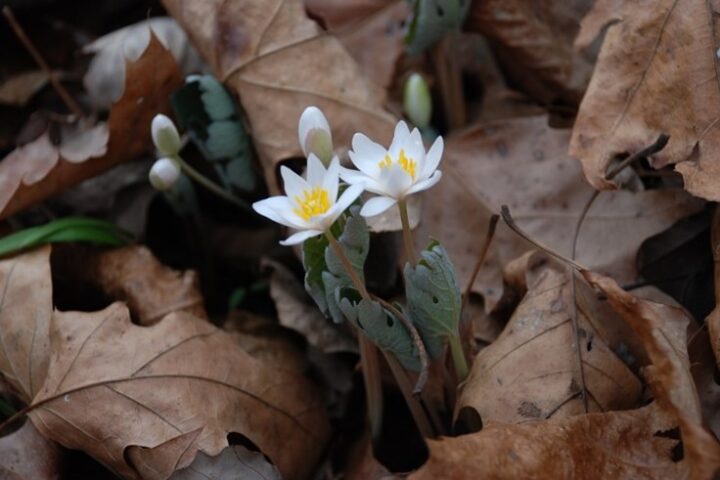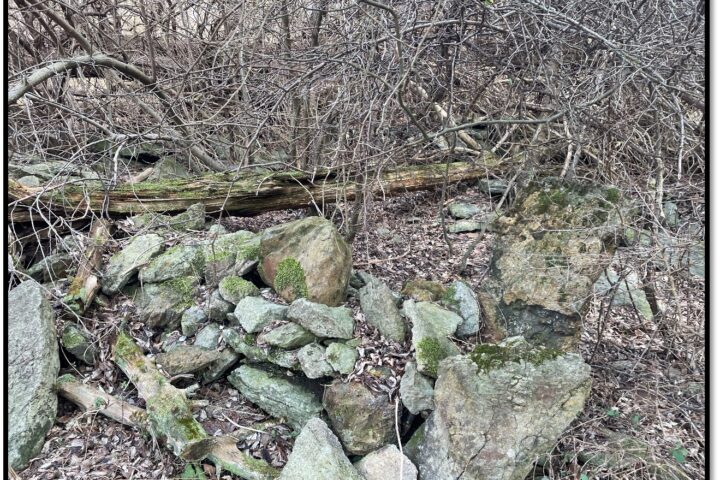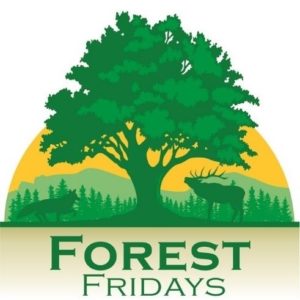
By Ryan Reed
Many people are familiar with hard mast—acorns, hickory nuts, beechnuts, etc. Across much of the state, it’s been a spotty year for oak (acorn) mast, but hickory nuts, walnuts, and butternuts were abundant.
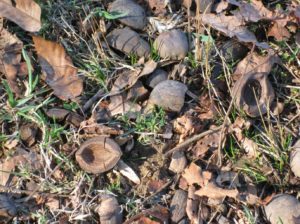
Hickory nut hulls.
Soft mast was also noticeably plentiful throughout the state. As the name implies, soft mast refers to fleshy fruits that are not nut-like. A great example of soft mast, fox grapes are copious this year with big, full bunches that from a distance appear as sheets of purple draped over lower tree branches. A bit less conspicuous, hackberries and red chokeberries were also abundant.
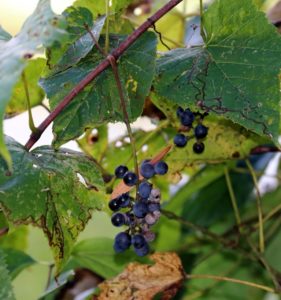
Fox grapes.
Other soft mast producers, many of which are classified in the Viburnum genus, were equally productive. Examples include nannyberry, arrowwood, northern wild raisin, maple-leaf viburnum, and cranberry viburnum. Known to feed a diversity of songbirds like thrushes, robins, cardinals, and even the ruffed grouse, perhaps Viburnums are an under-appreciated source of forest food.
More familiar to most due to their ornamental appeal and use, crabapples and hawthorns were also endowed with excellent fruit crops this year.
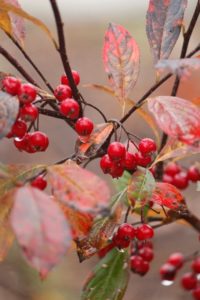
Red chokeberry.
This major infusion of energy into the food web certainly affects wildlife, both short and long-term. Abundant fall foods may, for example, delay the onset of
hibernation for many of our black bears, or postpone the migratory flights of some transient songbirds. For many species, this caloric abundance translates to better odds of winter survival, increased litter sizes, and higher survival of next year’s young. Of course, food chain effects translate to predators too, in the form of more abundant prey that may also provide better nourishment. Abundant forest foods affect all levels of the temperate forest food web, from the tiniest herbivores to the top predators.
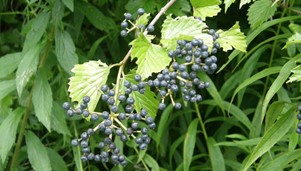 One may wonder, “What causes a good mast year?” The answer is, there are many factors that govern the production of these foods; but any farmer can tell us it all depends on conditions. For instance, the absence of a late frost, which could nip developing flower buds, can be critical. It’s also important to have enough rain, but not too much, and at reasonable intervals. Even the amount of wind can be important in the process of pollination for mast-producing trees, shrubs, and vines. Many folks are aware that insect pollinator populations can be cyclic, which also can affect fruit and nut production. Given all these factors, one thing is certain—this year, many of the conditions needed for a banner mast crop were met.
One may wonder, “What causes a good mast year?” The answer is, there are many factors that govern the production of these foods; but any farmer can tell us it all depends on conditions. For instance, the absence of a late frost, which could nip developing flower buds, can be critical. It’s also important to have enough rain, but not too much, and at reasonable intervals. Even the amount of wind can be important in the process of pollination for mast-producing trees, shrubs, and vines. Many folks are aware that insect pollinator populations can be cyclic, which also can affect fruit and nut production. Given all these factors, one thing is certain—this year, many of the conditions needed for a banner mast crop were met.
Forest Fridays is a feature of the DCNR Bureau of Forestry.


